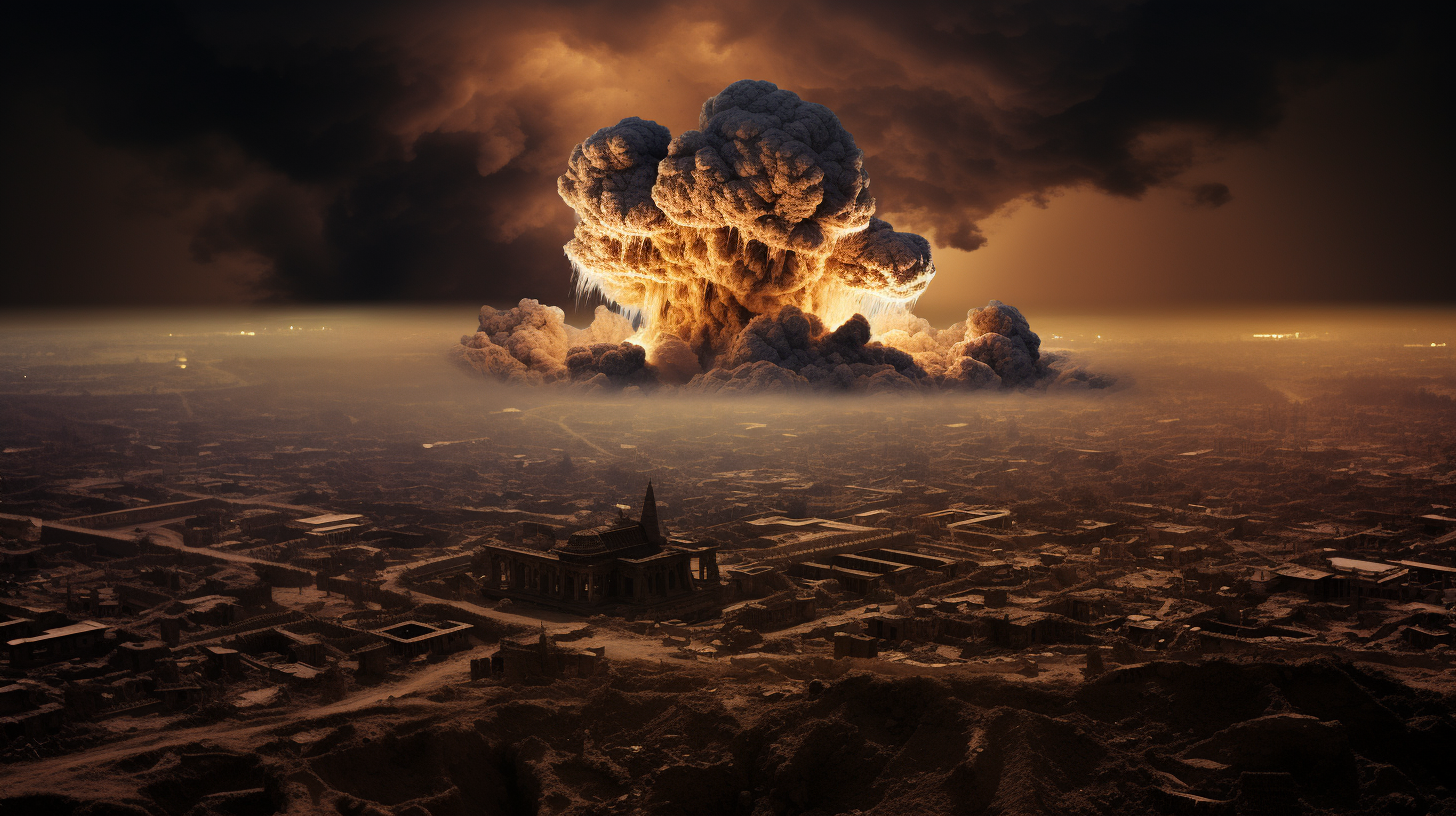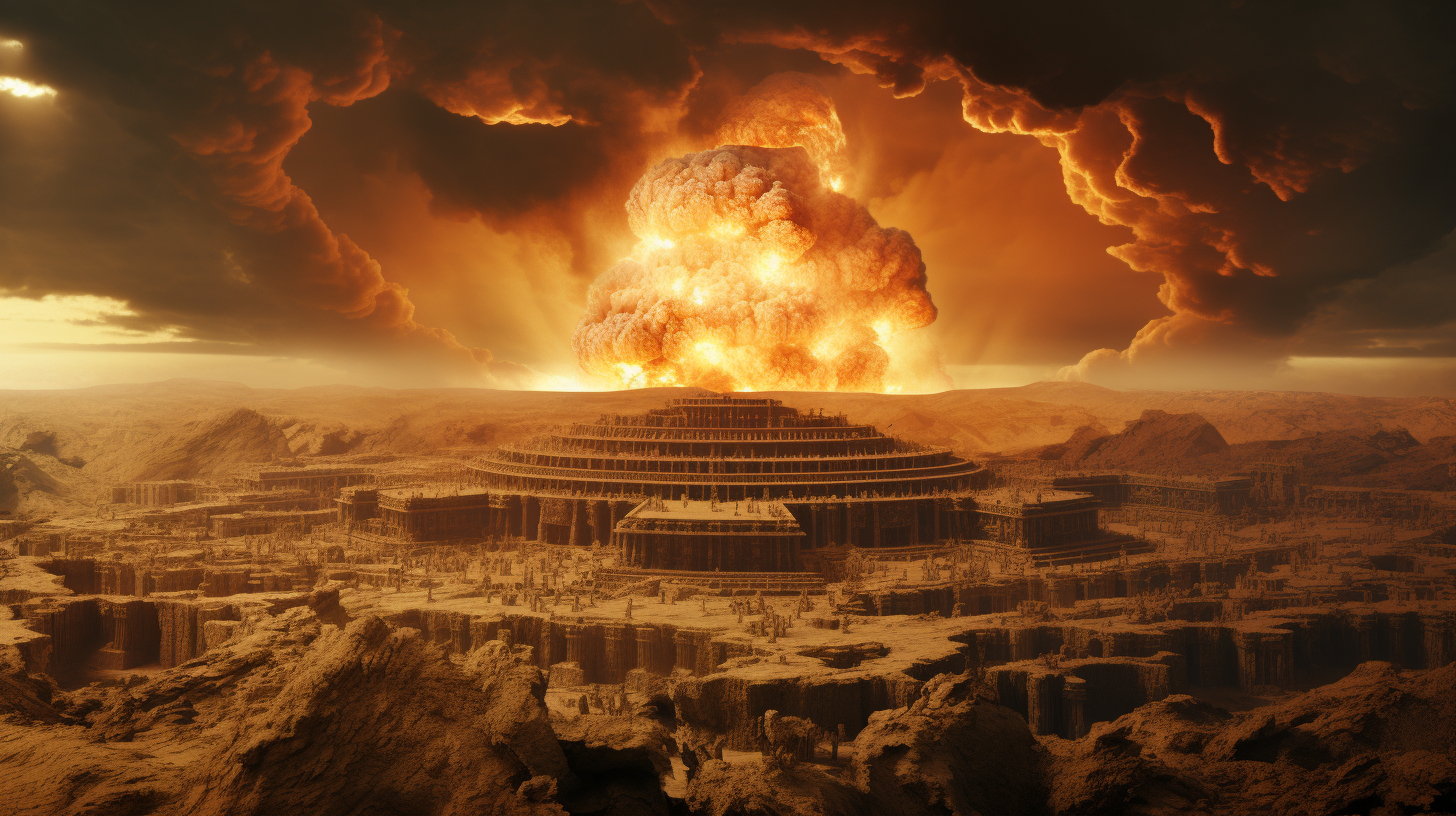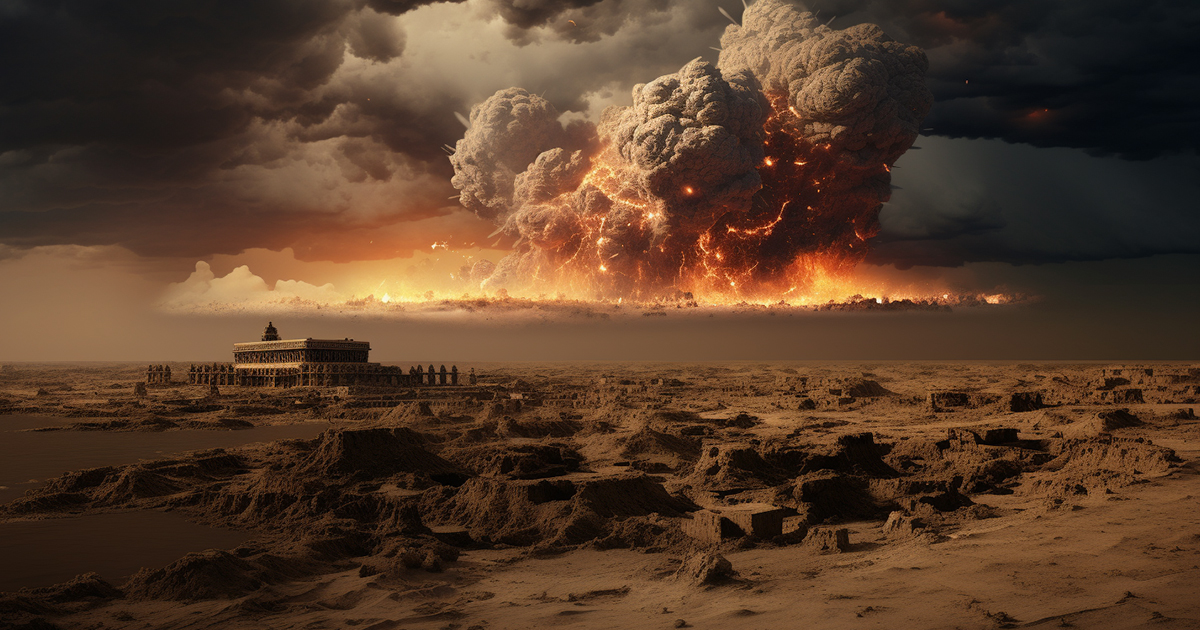Situated at the heart of the Indus River Valley lies Mohenjo-daro, an ancient urban center known as the “Mound of the Dead,” a title that has intrigued historians and archaeologists for centuries.
Dating back to 2600 BC, this expansive city stood out for its well-planned streets and advanced sewage system, showcasing the pinnacle of ancient urban development. Yet, underneath the external grandeur of this once-thriving civilization lies a mystery that has puzzled experts for ages.
The fascination with Mohenjo-daro extends beyond its remarkable urban layout to the perplexing remnants of a catastrophic event that occurred in the distant past.
Exploring the enigmatic history of this ancient city reveals compelling evidence pointing towards a massive explosive incident.
The traces left in Mohenjo-daro are both perplexing and ominous. Researchers from the Soviet Union stumbled upon preserved skeletons frozen in time, their poses indicating instant death. Some of these remains exhibited radiation levels exceeding normal standards by as much as 50 times.

Additionally, fragments of pottery were found fused together, and the city’s defenses had been heated to the point of becoming glass-like in texture. Could these peculiar findings be remnants of a past nuclear explosion?
To deepen the mystery, ancient texts like the Mahabharata recount a terrifying event mirroring the eerie discoveries at Mohenjo-daro. According to these accounts, a blinding white-hot smoke engulfed the city, reducing it to ashes.
Numerous horses were consumed by flames, while human bodies disintegrated due to intense heat. Subsequently, a haunting silence fell over the area, and individuals began suffering from radiation-induced ailments like boils, hair loss, and nail deterioration.
This unsettling connection between historical narratives and archaeological findings raises many questions. What kind of weapon could have caused such destruction in ancient times?
How did the survivors cope with the aftermath of this catastrophic event? And what was the source of the radiation that left such a lasting mark on the land and its inhabitants?

While we ponder these mysteries, we must also reflect on the intriguing presence of the Garuda, a powerful mythical creature from Hindu mythology.
Portrayed as a massive bird-like being with fiery attributes, the Garuda supposedly emerged in the skies following the devastation at Mohenjo-daro, unleashing hurricane-force winds and instilling fear in the population.
Does this mythological entity represent the destructive power that befell the city, or does it hold a deeper connection to the fallout of radiation?
Although the answers to these queries remain elusive, one thing is certain: Mohenjo-daro remains a focal point of curiosity and intrigue, offering insights into the tragic decline of an ancient civilization.
The anomalies discovered within its ruins serve as a testament to the fact that history is replete with mysteries awaiting unraveling, enticing those brave enough to explore the depths of the past.
Watch the Video Below:
In the shadow of Mohenjo-daro’s mysteries, we are compelled to contemplate the profound impact of ancient events on the course of history and the enduring legacies they leave behind.
As we continue our quest for answers, we may one day shed light on the secrets concealed beneath the rubble of this enigmatic city, bringing us closer to understanding the ancient world and the forces that shaped it.
